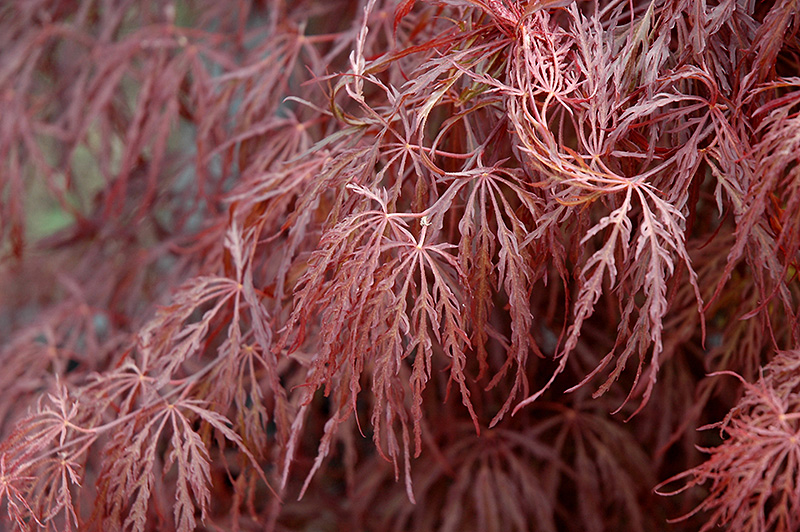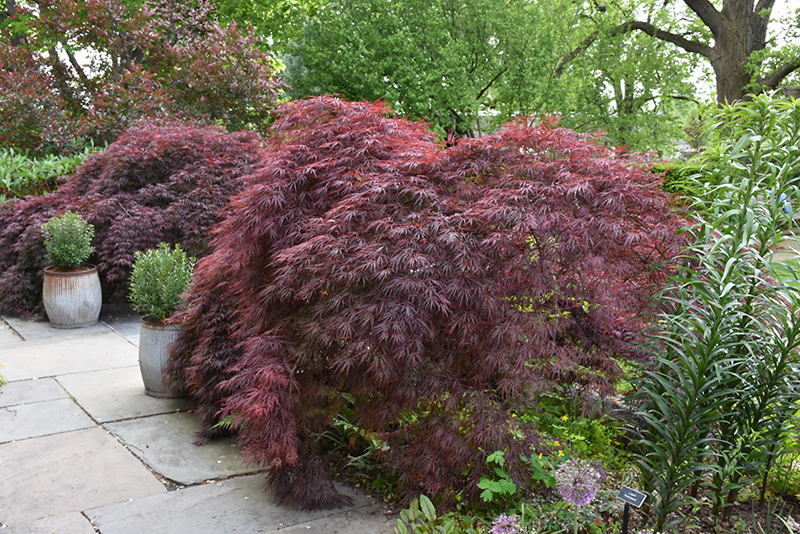>> Home
Crimson Queen Japanese Maple
Acer palmatum 'Crimson Queen'
Height: 8 feet
Spread: 10 feet
Sunlight:
![]()
![]()
Hardiness Zone: 5
Group/Class: Dissectum Group
Description:
A popular high quality small tree with rich deep purple foliage all season long and spectacular fall color in various shades of red and orange, compact and artistic growth habit; demands a place of emminence in the garden.
Ornamental Features
Crimson Queen Japanese Maple is primarily valued in the landscape or garden for its highly ornamental weeping form. It has attractive deep purple deciduous foliage which emerges crimson in spring. The deeply cut ferny palmate leaves are highly ornamental and turn outstanding shades of scarlet and orange in the fall.
Landscape Attributes
Crimson Queen Japanese Maple is a multi-stemmed deciduous shrub with a rounded form and gracefully weeping branches. It lends an extremely fine and delicate texture to the landscape composition which can make it a great accent feature on this basis alone.
This is a relatively low maintenance shrub, and should only be pruned in summer after the leaves have fully developed, as it may 'bleed' sap if pruned in late winter or early spring. It has no significant negative characteristics.
Crimson Queen Japanese Maple is recommended for the following landscape applications;
- Accent
- Rock/Alpine Gardens
- General Garden Use
Planting & Growing
Crimson Queen Japanese Maple will grow to be about 8 feet tall at maturity, with a spread of 10 feet. It has a low canopy with a typical clearance of 2 feet from the ground, and is suitable for planting under power lines. It grows at a slow rate, and under ideal conditions can be expected to live for 80 years or more.
This shrub does best in full sun to partial shade. It prefers to grow in average to moist conditions, and shouldn't be allowed to dry out. It is not particular as to soil pH, but grows best in rich soils. It is somewhat tolerant of urban pollution, and will benefit from being planted in a relatively sheltered location. Consider applying a thick mulch around the root zone in winter to protect it in exposed locations or colder microclimates. This is a selected variety of a species not originally from North America.

